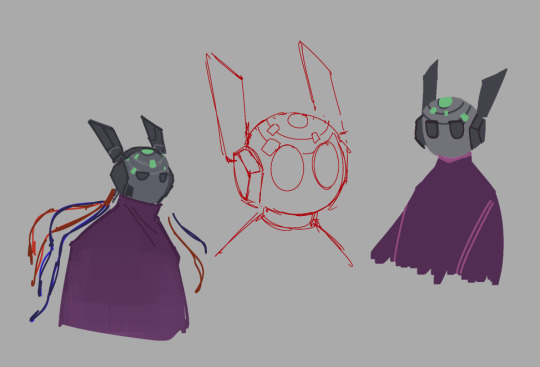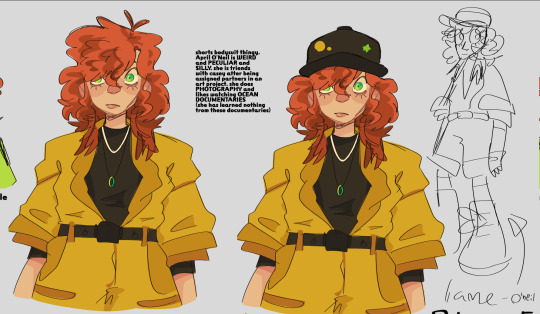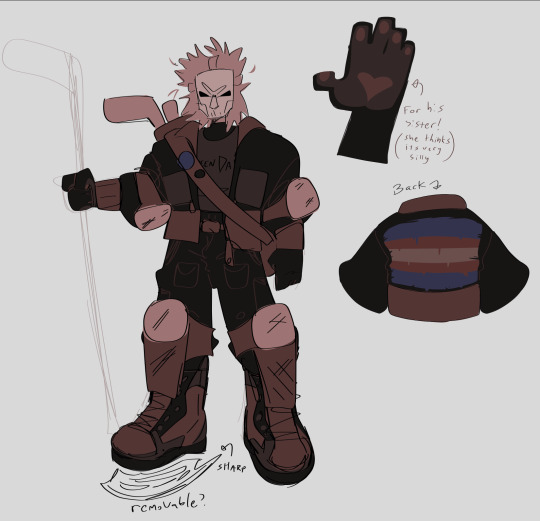#Iterative Development
Explore tagged Tumblr posts
Text
Iterative Development

Slice #293
6 notes
·
View notes
Text
#Adaptive Software Development#Agile Methodologies#Software Development Process#Iterative Development#Project Management in Software Engineering
0 notes
Text

We are expert reliable and effective business and start-up Iterative Development Service Company in USA.
#Iterative development#MVP Product Development Service#MVP product development#MVP Development Company#Minimum viable product development services
0 notes
Text
This is good software development practice. Getting feedback from actual customer usage and aligning further development with that purpose. Someone is doing good work at Tumblr. Nice job.
Hello again, Labs here with a recap of our test of Collections! We introduced this prototype back in September and then handed the feature to a handful of volunteers sourced from the notes on that post. Thank you again to all volunteers!
We got so much useful feedback, and wanted to share some of that here, and reveal some next steps we’re taking. There are a couple of big projects cooking in Labs, and Collections has taken a backseat lately, but it is important to us to not leave y’all hanging. We very much want to build things with you here.
Our goal with the volunteer-based super-early phase of Collections was to see if those volunteers actually use the feature, watch what they come up with, and check whether anybody they invite to Tumblr signs up and becomes a regular user of the site. Turns out, nobody did sign up — it’s not as useful of an onboarding strategy as we thought it could be.
However, one piece of feedback we got is that Collections make great custom feeds, which people on Tumblr have been asking for a lot over the years. We hear you loud and clear: you want to supplement the standard Following / For You experience with more intentional control over feed content. That’s really important to us.
With that in mind, for those in the prototype, we’ve moved the Collections list to the left sidebar / mobile navigation as an expandable area like Account, for quick access. We like this better than putting them in the dashboard tab bar, but it’s still something we’re mulling over:

We also heard the need for more filtering options beyond just blogs and tags. What about only including a blog’s posts that use a certain tag, or excluding posts using a certain tag? Or list tags with a boolean AND operator (“posts tagged [tag] and [other tag]”), not just the OR operator we’re using now for sourcing tagged posts. Lots of ideas on how to further customize what shows up in the feed, and better define what the feed is “for”.
There were other fun, tangential bits of feedback, too, like the desire to make these Collections a collaborative feature, so that more than one person can help build a Collection. There were also several usability issues that came to the forefront, which we’ve addressed. And there were some well-articulated thoughts and questions about etiquette, such as how to seek a blog’s “permission” to be included in a Collection – that’s something we care a lot about, to help prevent this kind of feature from being a source of abuse.
Another piece of feedback we heard repeatedly is the desire for Collections of posts. This is not really what we intended with what we built, but it’s not too far afield either. We totally agree that having better, easier ways of collecting and curating individual posts would be useful, so we’re going to investigate that as a separate project.
With all of this in mind, we’ve split the work on Collections into two separate tracks:
Shaping this feature as a “customizable feeds” solution, away from an “invite others” tool.
Building a new thing for saving and curating static posts.
Stay tuned here on the Labs blog for updates on when/if we’ll be moving these Collections tracks of work to more people on Tumblr. (If you are one of the volunteers who helped us with Collections, you’ll still have access to it for the time being!)
Thanks for reading! And please reach out to us via Support, the replies here, or your reblogs, if you have any more feedback, as always.
784 notes
·
View notes
Text

day 31 - unfortunate development
This was a gift from a close friend.
its over................................ dyes
#rwartmonth#rwartmonth 2024#rain world art month#rain world art#rain world fanart#rain world#five pebbles#iterator#unfortunate development#superstructure#pearl#wild draws#wild draws rain world
755 notes
·
View notes
Text





Meet Eve, another core cast member and a top tier mage that bends weather to her will. Being such a powerhouse leaves her a woman of little words, hard to approach, but difficult not to look at. I can't wait for y'all to meet her in Tears of Xivo!
A link to her character sheet
#Eve ToX#Tears of Xivo#her cloak in the fourth shot was fighting me so bad#i had to simulate it like five times and add a floor to get it right and it's still imperfect#but whatever#I'm really satisfied with her hair and eyes#i went through like four iterations of her outfit concept#game development#indie games#3d art
76 notes
·
View notes
Text
heyy im bored does anyone have questions about or for my iterators
these are the three i have shown here before but i do have more

Sings Of Tides, has/had an above average control of its regions water management

Winding Pathways, a living labyrinth and art statement

and Set In Stone/ Written In Stars/ As Sure As The Sky, an iterator focused on meteoritics
#non iterator ocs would be fine too#i wanna develop these guys more but i cant think of anything rn#tides and WP are built on opposite ends of a very large lake and are good friends#Stone is a more isolated from the local group and also a bit of a boomer#i might draw some of the answers if i get asks#blinking at you all with my big wet eyes
134 notes
·
View notes
Text
i couldnt be hyperfixated on a CANON ship bc how else would i be able to have 300 ways they first kissed or confessed or met each other even. what would i do then
#kj speaks#i know plenty of canon ships have canon divergent fancontent like this i KNOW#but its 10 million more times fun this way#my faves have 1 episode#thats all i needed.#obviously i still think lesbian capril wouldve been a great addition in a tmnt iteration#butttttt i have so much fun with capril that are only half developed#canonically
30 notes
·
View notes
Note
you know the drill
💔&🖤
Ohh, Boli, my love, you got me comin' in hot here:
💔: If you had to remove one major character from the series, who would you choose?
Honestly? It’s Dooku.
The films fail him as a character. He’s there to kill time between villains, foreshadow Anakin's fall, and because Lucas wanted a respected film icon in his prequels the way he had Cushing and Guinness in the OT.
"But Jess, he's your fav and you're uncomfortably horny about him on main?!" you might ask. Yes, Dooku has an incredible backstory, a huge amount of narrative and emotional complexity, and a burning pile of potential, but it is never addressed or expanded on in the films. He has no arc or dynamic development - even his political scenes with Padme hit the cutting room floor. His motives for leaving the Order or joining the Sith are confused at best, shunted to supplemental canon, and the fake war plot is arguably one of the weakest and most confusing aspects of the prequels. He isn’t even given last words; fitting in the scene, also a perfect summary for how the character is used in the narrative.
Imagining him gone is also an interesting possible fix-it recipe. So: lil' baby Doo gets turned into a spinewolf snackpack back in bby 101 or whatever and never exists. Okay, without Dooku there to save his life, teenaged Sifo-Dyas is either a. smashed by a falling city, b. drowned in hospital basement bacta flood, or c. tortured to death by Evil Moss (holy shit Dooku rescues him a LOT in that damn book). Between the two of them, that means the clone army is out. And if Qui-Gon had a different Master, one who actually put their foot down about the prophecy holocron instead of codependently indulging him, would he still have gotten obsessed with it to the point that it built into his obsession with the Chosen One and actions with Anakin? Maybe, maybe.
🖤: Which character is not as morally good as everyone else seems to think?
It’s ironic that my man Qui-Gon has become the canon poster child for The Only Truest Goodest Jedi, the exception to the so-called arrogance of the late stage Order, when his actions in Phantom Menace are a laundry list of things people routinely blame the Jedi for doing. Now, I love Qui-Gon, he’s my first favorite character, but let me just give a quick bad faith summary of his actions in TPM just to prove my point before I round back around:
convinces an enslaved child to participate in a deadly race, then buys the child from profits gained from betting on the race’s outcome
blatantly ignores priorities of intergalactic crisis to pursue the goals of his own fringe spiritual beliefs and conspiracy theories
takes said untrained 9 year old child into active combat after being told expressly not to train him
Of course, this is a bad faith summary: all those decisions have greater nuance and narrative context. (Tho, actually, why did Anakin come to Naboo... nevermind) This is not to say I think Qui-Gon is secretly bad or something.
But I think people reduce Qui-Gon down to:
Qui-Gon follows his instincts to commune with plants and rescue cute animals :3
When the reality is (also!):
Qui-Gon follows his instincts to do some morally dubious bad optics shit that works out for him by the end, which is a thing he learned to do from watching Dooku break shit with no consequences btw, and not a uniquely different approach from all other Jedi
I've said it before, I'll say it a thousand times: let Qui-Gon be a beautiful problem, that is part of the joy of the character!
#HEY IT'S A CONTROVERSIAL OPINION ASK GAME#rochen and I were just talking about this the other day#re: if Star Wars was a perfect media with fully developed characters the urge to create and iterate in that space would be a whole lot less#The gaps are where the creativity comes in and flourishes#Dooku IS so compelling to me because he is so narratively stunted in the films that there's a huge opportunity to explore him#it's not that his complexity isn't there they just never do much of anything with it#so I will#every time I pick up the character to write I think “hey bitch you wanna go on an adventure”
27 notes
·
View notes
Text
I’ve been deconstructing my ideas of Tim to separate fanon from canon for the purpose of my solo run idea. What do you mean Batman calling him Jason was a canon event. I understand fanon has a basis in canon but I thought that was a development of fanon maybe. Eye is twitching I’m bringing back all of my deconstructed emotional disconnected mentor Batman thoughts
#aimeespeaks#tim drake#red robin#I have said that in my backstory rewrite he’s just a sever latchkey kid case and there is no criminal neglect as in fanon#but I’ve also said Janet will be really a complicated character (it’s what she deserves)#and although I’ve not really talked about Jack he remains as he was for a lot of time original Robin run#extremely emotionally disconnected#like he’s not abused or neglected but going back to one of the three core aspects of my run#which is 1. why is he a vigilante 2. who is he and 3. the mental illness he has#and like it connects to all of it#his childhood is such a heavy focus cause it shapes he’s need to be not only useful but also emotionally dependable#and how those two needs play into why he is who he is#(I will get back to this but it largely comes back (to me this is lore I’m creating and one day will make canon if I can) (Janet deserves#to be a real character)#and like. unfortunately this really helps actually cause it bridges the gaps between his childhood and present with a blaring sign that#is his Robin years#I will largely skip over them and I don’t ever plan to address it#but my iteration of Tim does not see Batman as a father#he doesn’t want a dad who’s not his dad#his parents died when he was old enough that adoption wouldn’t ever really be considered the option emotionally#so he’s not like dick (who btw although he has a parental relationship with b never is adopted and that’s a seperate can of worms)#and he loved his parents who although emotionally u healthy genuinely loved and cared for him#(not like Jason. also he comes after Jason the only son Batman like set out to father (b4 bio Damian) (and don’t even get me started on#cass)#that’s not his dad that is one man in a line of emotionally unavailable mentors#(I have also not gotten into how entrenched in academia Tim was growing up with Janet (it’s never really implied he spent lots of time#around his parents buisness so. I’ll get into this later)#like a Batman who is canonically and unfortunately deeply emotionally unavailable and who is overall very unintreseted in a new Robin is.#so perfect for a child who had to develop extreme levels of emotional intelligence and independence young (aided by being a genius)#as a way to understand his mothers love
19 notes
·
View notes
Text
hooray

group picture of thwse guys. kinda of all over the place but ive names them the deluge group
also theyre on artfight! all of them. https://artfight.net/~Echosian
#rain world#oc art#artists on tumblr#rainworld#rw iterator#iterator oc#deluge group#is this anything#now i have to meticulously develop all of them. lol#also theyre on artfight. im prepared#< you should follow me on there :3
103 notes
·
View notes
Text
PERSONAL TURTLES ITERATION DUMP GO!!!!


these are my silly little animals. my babies. YAY!!!!!!! i have yet to come up with a proper sub-title but i think ill just call them tmnt homebrew as a place holder. biggest notes: transfem leo 4EVER!!! and theyre all different turtle species. of course :) though a little rougher i do have some shell concepts 2 add to this

Leo is an ornate diamondback terrapin !! Donnie is a black knobbed map turtle. raph and mikey are TWINS!!!!!! and painted turtles <333

APRIL ONEIL I LOVE YOUU shes my babygirl.. she has a tumblr blog where she posts photos of the abandoned buildings she explores. kisses her on the head

casey is def most vulnerable to design adjustments bc hes so close to 2012. but 2012 also just did really good on a fun teen casey design. hes so grimy i love him

also.. still a vigilante. and very transgender my tmnt is so transgender. and hes got a baby sister named mary !!!!



splinter concepts.. hes very underdeveloped in comparison to the others in terms of design. but he def learns more toward the fatherly splinter than teacher. i just want him to be nice </3 more tottmnt than tmnt 2012. also dont know what origin i want to go with? thinking human but idk. maybe hes been a rat. need 2 research him

ive got a STUPID amount of concepts ive thrown together but i think i will leave this post at this for now. i am very inspired by 2012 and tottmnt as those are the series ive seen most recently. but there is a lot of 87 and rise in other parts. yay!!!! posting about neutrinos next pls get excited i adore them. look up the 1987 neutrinos in the meantime if u havent seen themf
#tmnt#teenage mutant ninja turtles#tmnt fan iteration#tmnt homebrew#NEED to find a good name but like. most series are referred to by year i cant do that#tmnt michelangelo#tmnt mikey#tmnt leonardo#tmnt leo#tmnt donatello#tmnt donnie#tmnt raphael#tmnt raph#tmnt splinter#tmnt hamato yoshi#april oneil#tmnt fanart#casey jones#i dont think im gonna have like. a solid team leader. i want them to try to work as a team instead of everyone and LEO!!#but i want to torment mikey so he might be mutation order eldest and thus a pseudo leader for fun. idk. trying to balance the torment#between the bros but thats HARD bc the favoritism. the favoritism.#ALL THEIR EYES!!! ARE ANOTHER TURTLES MASK COLORS!!! so many series do that like halfway its ANNOYING#so i did it. for realz. YEAHHHH#i keep getting ahead of myself and messing with far away concepts#like the neutrinos are SO fleshed out but karai is nowhere to be found and i have NOT been thinking abt shredder AT ALL#im guilty of that but i will NOT feel bad abt developing renet so much rn bc i looooveeee herrrr#ok. schedule tweet#forgot one#klunk tmnt
48 notes
·
View notes
Text
*complaining for no reason again because i am bored* i need more ppl to know that these. are all the same person these are literally canonically all the exact same individual person im begging u



literally almost all the ganondorfs are the exact same individual and almost all the ganons are the exact same individual, almost all the ganondorfs & ganons are the same exact person just in different forms and circumstances. except for FSA and maybe whatever the fuck is going on with TotK ganondorf but i still think it’s weird that he still has golden eyes & rounded ears when even the gerudo in TotK’s ancient past dont, but anyway ashfjsbfjsn
#not like you always have to subscribe to canon because it’s often impossible to know the truth of certain things#or some things that are canonical just suck and should be changed anyway but like#of all the things that are like relatively basic facts for ppl engaging in the Lore or whatever#ppl are like always. Always talking about ganondorf as if every iteration of him is a different person just like link & zelda#but so much of his character development stems from the fact that WW ganon and TP ganon are both different timeline offshoots of OoT ganon#i’m not even citing the ‘Official Timeline’ on this because it is silly & confusing but i just literally mean#in terms of basic canon continuity#that WW and TP were conceptualized even in the early 2000s to be the events that occur distantly after the two timeline splits OoT created#because OoT is a game about time travel and the entire concept of the split timelines in this series#originated from the two different scenarios that are created by link & zelda’s use of the master sword and the ocarina#WW ganondorf and TP ganondorf are both literal older versions of OoT ganondorf in 2 different futures#not to mention all of the ganons in the early games. OoT was made as a prequel that both literally and figuratively#attempted to humanize the main antagonist of the series#OoT ganondorf at the time WAS the ‘ganondorf with character development and an actual motivation’#WW ganondorf (who is the same person.) just actually got to vocalize what specifically his motivation was#which is great!! and also retroactively gives OoT ganondorf more context & depth#can u tell i am off my meds at the moment and have nothing better to do with my time ahsjfhskfhdj
307 notes
·
View notes
Text


Post-War Golden Cheese and Dark Cacao my beloveds <3
#I have REASONS for my design choices#Also based of the HC that after the Dark Flour War GC stayed in the Cacao Kingdom until she was able to develop enough supportive tech#to actually make the city of gold. bc like. in canon she did say that even making major CHANGES to the CoG would put crazy strain on her SJ#much less creating it from scratch#kind of lower quality than I usually post but I'm in a slump rn#DC kind of looks like shit but this is the like 4th iteration of his outfit#and you'd have to legit torture me to make me draw a 5th#golden cheese cookie#golden cheese crk#dark cacao cookie#dark cacao crk#you can tag as ship irdc#crk#crk fanart#cookie run kingdom#Please someone give me incentive to tell the world about the AU surrounding this I swear its interesting#im gnawing at my cage bars please someone let me someone please give me the go ahead guys please I swear it's interesting#cookie run au#cookie run fanart#artists on tumblr#digital artist#drawing#teethart
102 notes
·
View notes
Text
lady will be redeemed just trust
#devil may cry#loving this new iteration of her#make sense now her skill and wit is because shes a trained and indoctrinated demon hunter#is this how caitlyn stans felt damn#weirded out by people saying shes 'better in the game' 💀 what as a character that barely speaks????#the only good development she had was in dmc 3 and netflix's version sort of followed that progression#lady dmc#netflix devil may cry
11 notes
·
View notes
Text

FINALLY... the canon iterators now have solid designs and arnt being bullshitted on the fly by me and are also more inline with what they look like in game. bonus hastag Nakey:tm: ref under the hood

#jordas’ art#rainworld#rainworld iterators#rw looks to the moon#rw five pebbles#rw no significant harassment#rw seven red suns#rw sliver of straw#rw chasing wind#rw unparalleled innocence#you can clearly see the generations develop here#and ignore why Chasing Wind should be renamed to Chasing Gains. He ended up shredded and i have no idea why#same with Sig aswell out here being All Significant Gains#i love my more bullshit designs#but the guyyyyyyys
12 notes
·
View notes